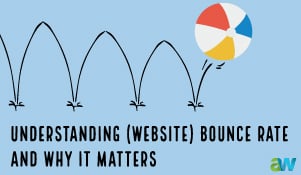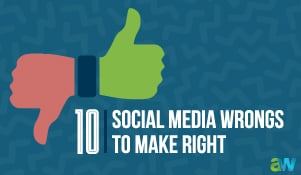Early Saturday morning, Bob's washing machine hit the skids. So, like most consumers, Bob went to the internet, typing "buy new washing machine."
The first two results Bob clicked on were similar. Each took him to a professional-looking website with row after row of shiny, new washing machines, each with a glitzy photo and a brief product description—not much help there.
The third result was different. It took Bob to an eBook called "Buy Confidently with our Free Guide: How to Get the Washing Machine You Need without Paying More Than You Should" Actually, it took him to a local appliance store's landing page that asked for his contact information in exchange for the Guide. Bob was happy to comply (he really wanted the information).
The Guide explained that most people pay too much for their new appliance, getting lots of fancy features they didn't need. Then it gave a checklist of questions to ask, and points to consider to help in evaluating washing machine features. Bob was impressed. He also received an email from the business, thanking him for downloading the Guide, and providing a link to another valuable resource, a blog post titled "Protecting Your Washing Machine Investment: Is the Manufacturer's Warranty Enough?". Bob clicked through to read that, too.
Bob's experience is an example of the win-win scenario inbound marketing provides. The local appliance store got a high quality new lead. Bob got some valuable insights into evaluating washing machines. And, when it came time to buy, Bob decided to buy from the business that had helped him.
Rather than pushing intrusive ads at consumers, inbound marketing pulls them in, providing valuable information that builds trust. It is significantly more effective, and generates an uptick in every marketing metric, including closed sales.
WHAT IS INBOUND MARKETING?
Every business is different, with different customers, different goals and different marketing challenges. Inbound marketing works especially well for B2B companies and products or services that have a high price tag or which typically involve some customer education. Consumers like to make informed purchase decisions, and providing the information and resources available to them, on demand, is at the heart of inbound marketing.
As HubSpot explains, inbound marketing works by helping prospective customers answer their questions and solve their problems, building trust in the businesses that leverage it:
"Inbound marketing is a business methodology that attracts customers by creating valuable content and experiences tailored to them. While outbound marketing interrupts your audience with content they don't always want, inbound marketing forms connections they are looking for and solves problems they already have."
DOES INBOUND MARKETING REALLY WORK?
Effectively and strategically leveraged, inbound marketing can be remarkably effective. Consider for example these inbound marketing metrics from HubSpot:
- Businesses that put a blog on their websites generate 3X as many leads as those that don't
- On average, leads generated from inbound marketing cost 60% less that those acquired through outbound campaigns
- More than 8 in 10 business leaders prefer to get information from blogs (and other forms of content) as opposed to advertisements
- Content marketing on average generates 3X more leads than paid search (for example, through Google Ads)
- More than 80% of marketers say their inbound campaigns generate a positive return on investment (ROI)
INBOUND IS ABOUT MUCH MORE THAN LEAD GENERATION AND NURTURING
Because inbound marketing campaigns build trust in the businesses that deploy them, inbound can be extremely effective in generating and nurturing new leads. Although it's true that lead generation is the number one challenge for today's marketers, inbound can be equally effective in boosting conversions on your website, increasing sales opportunities and ramping up profits. It's also arguably the most effective means of retaining existing customers.
This focus of inbound strategies on providing customers and prospects the answers they need when they need them throughout the buyer's journey is sometimes referred to as "the flywheel." The notion is relatively simple: when you give customers the answers and solutions they need throughout (and beyond) your sales funnel, your business generates momentum.
This momentum enables both repeat sales and, through word-of-mouth marketing, referral sales. Said differently, the inbound model is not a traditional sales funnel, but a circular (repeating) process, one in which new leads are nurtured and become loyal customers who give you repeat business, and expand the services they use you for, often with increasing revenues over a longer period of time.
IN CONCLUSION
Inbound marketing can be remarkably effective in helping your B2B business achieve its principal marketing objectives—but it also takes a solid strategy paired with the right tools and content to be effective.
To learn more about developing an inbound marketing strategy, or the ways our web development, interactive marketing and branding services can help you take your business to the next level, request a free consultation today.







Leave a comment